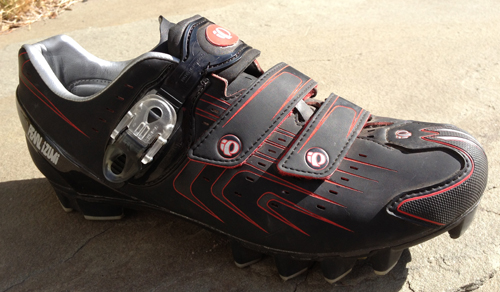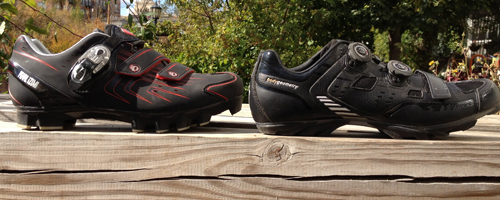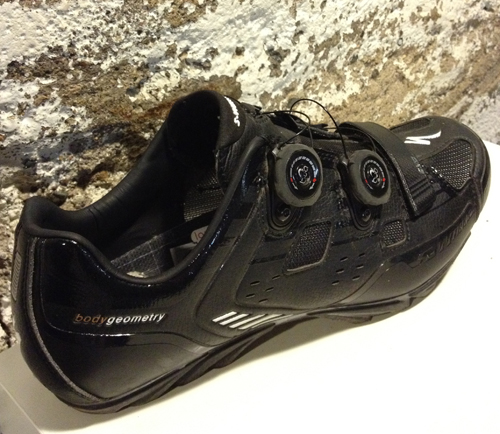Top-end mountain biking shoes are light, stiff, great fitting, and built to endure multiple seasons of abuse on the trail. Throughout the summer I took turns mashing with two high-end, “race ready” models, the S-Works Evo MTB and Pearl Izumi’s P.R.O. MTB II
Both impressed. In fact, I had to wrack my brain to come up with even the slightest performance-related criticisms. The only real issue with these puppies is barrier to entry — the Pearl Izumi pair runs for $270 msrp and the Specialized Evos will set you back a staggering $370.

What do you get for shoes that cost more than some complete bikes? Basically, these are the same shoes the pros ride. As such, they’re state-of-the-art, including full carbon soles, bomber construction, and exceptional performance fit.
They won’t make you ride faster. Well, maybe a bit, but a few less 12oz. curls and a few more miles are probably a safer bet. The main advantages to a shoe like the S-Works Evo or the P.R.O. MTB is their light weight and ability to crush for miles and miles over any kind of terrain.
Both of these shoes weighed in at about 370 grams apiece on our scale (the Pearl was 390 grams) for a Euro size 43. Both are a good 100 or more grams lighter than more manageably-priced mtb shoes. Weight does matter, especially for long endurance rides and races.
Side by side, the weight difference between these two pairs is essentially a wash. On the bike they’re exceptionally light, letting you clip in and spin with more ease as the miles roll by.

Like many cyclists, I prefer a snug fit to maximize energy transfer and control. Both the Pearl and the Specialized lock my feet in but are still comfortable. I’d give a slight edge to the Specialized, with its upper providing a slipper-like fit with supple feel.
Contours on the Specialized footbed kept my oft-achy pigs feeling good even on long rides. In the same size, the toebox of the Pearl Izumi shoe was a bit more cramped for my foot shape.








